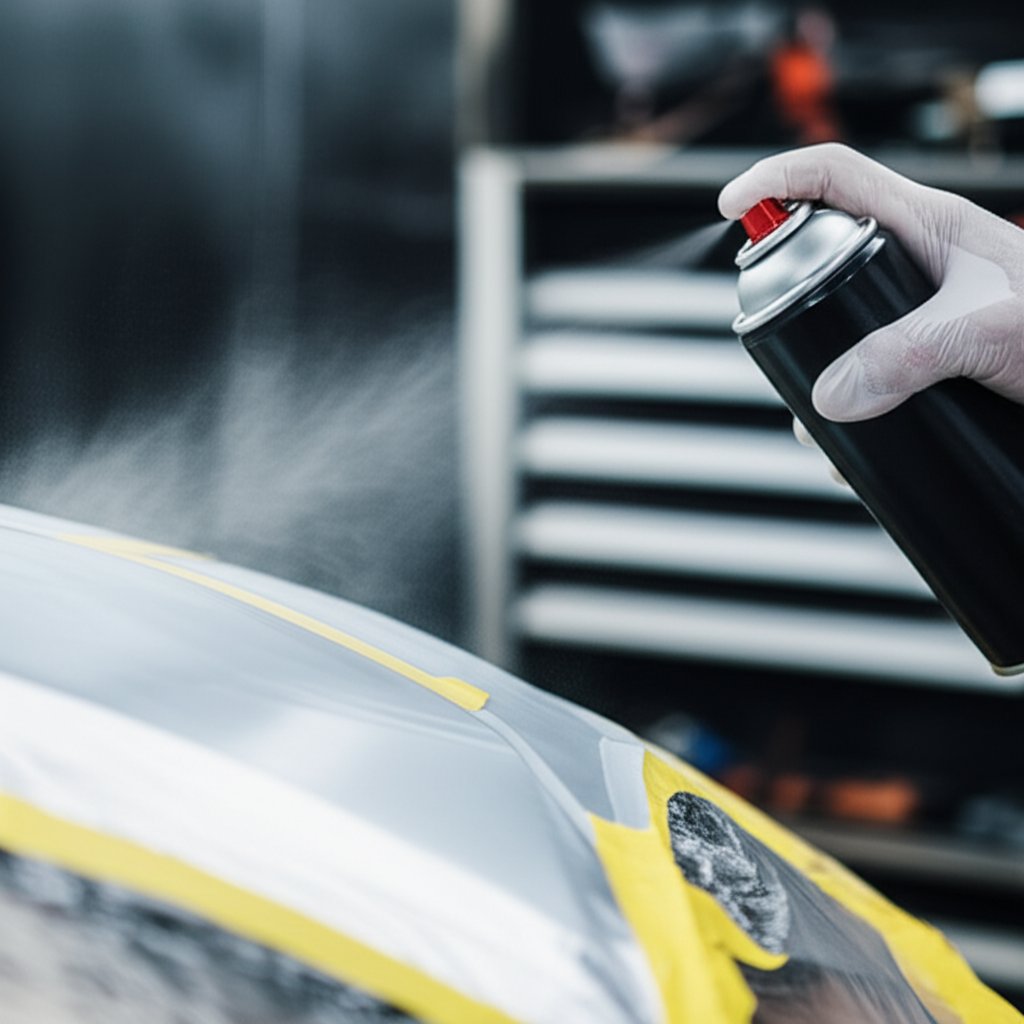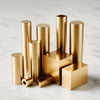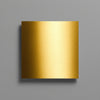Primer Paint for Aluminium That Actually Sticks: What To Use

Why Primer Paint for Aluminium Matters
Why Aluminium Needs Specialized Primers
Ever wondered why paint just won’t stick to aluminium the way it does to wood or steel? The answer lies in aluminium’s unique chemistry. As soon as bare aluminium is exposed to air, it forms a tough, invisible oxide layer. While this oxide protects against corrosion, it also creates a slick, non-porous surface that repels most paints. That’s why using a dedicated primer paint for aluminium is not just a best practice—it’s essential for lasting adhesion, corrosion resistance, and a smooth finish that doesn’t peel or flake.
Imagine investing hours into a project, only to watch the paint bubble and peel within months. Without the right aluminum primer, that’s a real risk. Specialized primers—like self-etching, epoxy, or zinc-rich formulas—are engineered to bond with aluminium’s oxide layer, providing a foundation that paint can actually grip. This is the first and most important step in surface preparation for painting aluminum.
What You Will Learn
This guide walks you through:
- Why aluminium demands unique priming solutions
- How to prepare aluminium for painting to maximize paint adhesion and longevity
- Which aluminium metal primer paint types work best for specific scenarios (from DIY to marine use)
- Step-by-step safety and prep tips that even seasoned pros sometimes overlook
- Product-by-product recommendations, with real-world application tips and maintenance expectations
- How to decode manufacturer TDS (Technical Data Sheets), SDS (Safety Data Sheets), and relevant standards (like ASTM coating/corrosion guidance) for deeper insights
By the end, you’ll know not only how to paint aluminum metal for a finish that lasts, but also how to troubleshoot common pitfalls and choose the right system for your needs.
Safety And Surface Prep Essentials
Preparation is where most aluminium paint jobs succeed—or fail. Skipping or rushing prep steps leads to poor adhesion, uneven color, and premature failure. Here’s what sets a professional job apart:
- Thorough degreasing with a specialized cleaner to remove oils and contaminants
- Light sanding (180-220 grit) to create a micro-texture for the aluminum paint primer to grip
- Removal of oxidation using a vinegar-water solution or dedicated cleaner
- Applying the correct primer in multiple thin, even coats—never one heavy coat
- Respecting recommended flash and recoat times, and painting within environmental limits (typically 50°F–85°F and moderate humidity—confirm with the product TDS)
- Common mistakes to avoid:
- Skipping degreasing or sanding
- Applying heavy, uneven coats
- Choosing the wrong primer type for aluminium
- Painting outside recommended temperature/humidity ranges
Key Insight: The battle for long-lasting adhesion is mostly won—or lost—during prep. Invest time in surface preparation for painting aluminum and you’ll see dramatically better results.
Throughout this article, you’ll get specific guidance on selecting the right aluminum paint primer or aluminium metal primer paint for your project. We’ll cover use-cases from home repairs to marine hardware, and offer maintenance tips to keep your finish looking sharp. For every recommendation, always double-check application variables—like drying times, number of coats, and environmental conditions—against the manufacturer’s TDS or SDS. If those aren’t available, remember: thin, even coats with proper flash times in the right conditions are your best bet for a flawless paint job. Ready to learn how to paint aluminum metal the right way? Let’s dive in.

How We Selected The Best Aluminium Primers
How We Tested And Compared
Sounds complex? It can be—especially if you want a primer for painting aluminum that truly lasts. To ensure our recommendations deliver both performance and reliability, we used a structured evaluation process. Each product was tested with careful attention to aluminum prep for paint and real-world application scenarios. Imagine prepping a weathered railing or a new aluminum bracket—our method reflects both DIY and professional needs.
- Surface Preparation: Each test began with a thorough degrease using an aluminum-specific cleaner, followed by mechanical abrasion (180–220 grit sandpaper) to roughen the oxide layer. For some primers, we also tested deoxidizing with a vinegar-water solution, since how to prep aluminum for painting can affect results dramatically.
- Application Technique: We followed a controlled spray application: 6–10 inches from the surface, 50% overlap, and always multiple thin coats. This helps avoid drips and ensures even primer build, a key factor in prep for painting aluminum.
- Environmental Conditions: All products were tested within the manufacturer’s recommended temperature and humidity ranges, typically 50°F–85°F and moderate humidity. We noted any deviations in the Technical Data Sheet (TDS).
Adhesion And Corrosion Resistance
We prioritized primers that chemically bond to the aluminium oxide layer, as this is the foundation for strong adhesion. To evaluate performance, we referenced industry-standard adhesion and corrosion resistance tests, including ASTM D3359 (tape test) and ASTM D1002 (lap shear), where available (ASTM reference). Our picks favor self etching primer for aluminum and etching primer for aluminum options when maximum bite is needed, but also include products that excel in corrosion-prone environments.
| Primer Type | Adhesion on Bare Aluminium | Recoat Window | Sanding Behavior | VOC/Safety Notes | Availability |
|---|---|---|---|---|---|
| Self-Etching Primer | Excellent (bites into oxide) | 30–60 min (typical) | Easy to sand after full cure | Moderate VOC; use PPE | Widely available |
| Epoxy Primer | Superior (chemical bond) | 2–24 hrs (varies by brand) | Requires scuff sanding | Low to moderate VOC; PPE required | Pro/industrial outlets |
| Zinc-Rich Primer | Very good (corrosion barrier) | 1–2 hrs (typical) | Moderate; may clog sandpaper | May contain hazardous pigments | Specialty suppliers |
Application Ease And Safety
To ensure the best primer for aluminum is also practical, we considered:
- Ease of application (brush, spray, or roller compatibility)
- Clear instructions and accessible TDS/SDS for every product
- VOC content and recommended personal protective equipment (PPE)
- Cleanup and disposal requirements
| Checklist for Each Product |
|---|
|
Takeaway: We favored primers that bond to aluminium oxide, minimize underfilm corrosion, and accept a wide range of topcoats. Always check the paint system for full compatibility before you prime aluminum for paint—small differences in prep or product can make a big difference in durability.
Next, we’ll dive into specific product reviews so you can find the best primer for aluminum for your project and ensure every step from prep to paint is set up for success.
Rust Oleum Professional Aluminum Primer Review
Rust-Oleum Professional Aluminum Primer: Durable basecoat for metal
When you need an aluminum primer paint that truly delivers on adhesion and durability, Rust-Oleum Professional Aluminum Primer stands out as a professional-grade solution. Designed specifically for aluminum and galvanized metals, this water-based acrylic formula creates a tight bond that resists the blistering, flaking, or peeling so common when using standard primers or paints on bare aluminum. Whether you’re tackling railings, fixtures, or general fabrication projects, this primer lays a solid foundation for any topcoat.
Application Tips
Imagine prepping a set of aluminum handrails or outdoor furniture. The key to success with rustoleum aluminum primer is careful surface preparation and attention to application details. Start by thoroughly removing dirt, grease, oil, salt, and any chemical contaminants with a commercial detergent. Next, sand glossy or previously painted areas to create a micro-texture for the primer to grip. If your aluminium is previously painted, feather sanding and spot-priming bare metal areas improve uniformity and adhesion (reference).
Stir the primer thoroughly before use. Apply in temperatures between 50°F–90°F and humidity below 85% for best results. Use a high-quality synthetic brush, working in thin, even coats—avoid heavy application, which can reduce film thickness and protection. According to the official TDS, dry to touch occurs in about 30 minutes, dry to handle in 1 hour, and it’s ready for topcoat after 2–4 hours. Always check the TDS for your specific product batch, as recoat windows and compatibility can vary.
Key Insight: For best results and to avoid lifting or poor adhesion, always follow the exact compatibility and recoat windows listed in the Rust-Oleum TDS. Skipping this step is one of the most common causes of primer failure.
Don’t forget safety: ensure good ventilation, wear gloves and eye protection, and dispose of materials according to the SDS. Even though this is a water-based formula, proper handling is a must.
Pros
- Excellent adhesion to aluminum and galvanized metals
- Water-based acrylic—low odor and easy cleanup
- Resists peeling, blistering, and flaking
- Quick drying—topcoat ready in 2–4 hours
- Compatible with a wide range of topcoats
Cons
- Not intended for use on surfaces exposed to temperatures above 200°F
- May require multiple thin coats for full coverage on rough or porous areas
- Humidity and temperature can extend drying/recoat times
- Preparation steps (sanding, degreasing) are non-negotiable for best results
Best Use Cases
- General aluminum fabrication and architectural features
- Handrails, fencing, and outdoor fixtures
- Garage doors, window trim, and gutters
- Touch-up or restoration of previously painted aluminum (with proper prep)
Wondering how this compares to rustoleum clean metal primer or rustoleum bare metal primer? While those are excellent for steel and lightly rusted metal, the Professional Aluminum Primer is specifically tuned to the challenges of aluminum’s oxide layer, ensuring a secure bond and extended finish life.
In summary, if you’re looking for a dependable, easy-to-use rustoleum paint and primer system for your next aluminum project, this primer is a top contender. Up next, we’ll explore self-etching primers for situations where maximum bite and fast turnaround are critical.

Rust Oleum Self Etching Primer For Aluminum Review
Rust-Oleum Self Etching Primer: Fast bite on bare aluminum
Ever struggled with paint that just won’t stick to your aluminium, no matter how careful your prep? That’s where self etching primer for aluminium comes in. Rust-Oleum’s Self Etching Primer is specifically engineered to tackle the slick, oxide-rich surface of bare aluminum. By using a blend of acid and zinc phosphate, this aluminum self etching primer micro-etches the metal, creating a surface that paint can truly grab onto. This is the go-to solution for automotive repairs, custom brackets, and DIY projects where maximum adhesion is non-negotiable.
Surface Prep And Application
Imagine you’re restoring a set of aluminum trim or prepping small brackets for a custom build. The first step is always meticulous cleaning—remove grease, dust, and oxidation completely. Lightly sand your aluminium with 180–220 grit paper for a uniform scratch pattern, then wipe the surface with a tack cloth. When you’re ready to apply the spray paint primer for aluminum, shake the can thoroughly for at least one minute after the mixing ball rattles.
Here’s a simple spray technique for best results:
- Hold the can 8–10 inches from the surface
- Apply a light tack coat—just enough to mist the surface
- Follow with one to two medium coats, overlapping each pass by 50%
- On your aluminium parts with tight edges or perforations, angle passes to wet edges without flooding
- Avoid heavy wet coats, which can cause runs or poor adhesion
Work outdoors or in a well-ventilated area, and always wear gloves and eye protection. The acid content in aluminum primer self etching formulas means safety is critical—protect your skin and eyes, and avoid inhaling vapors.
Check the manufacturer’s TDS for exact recoat windows and topcoat compatibility. Typically, you can topcoat within 30–60 minutes, but always confirm for your specific climate and project.
Pros
- Maximum adhesion—bites into aluminium oxide for a secure foundation
- Etches and primes in one step, saving time
- Works on aluminum, steel, and fiberglass
- Quick drying—ready for topcoat in about 30 minutes
- Widely available as an aluminium spray paint primer
Cons
- Not for use on heavily corroded or anodized aluminum without additional prep
- Acidic formula requires PPE and good ventilation
- May not be compatible with all topcoats—test before full application
- Heavy coats can cause wrinkling or lifting if recoated too soon
Ideal Scenarios
- Automotive panels and bodywork
- Small parts, brackets, and trim
- Restoring vintage aluminium hardware
- Quick-turn DIY or repair projects needing a reliable base
Tip: The secret to flawless adhesion with self etching primer for aluminium? Stick to multiple thin coats and respect recoat windows—most failures happen when these steps are rushed.
For projects where you need a spray paint primer for aluminum that offers real bite and a smooth base for topcoats, Rust-Oleum’s self etching formula is a top pick. Up next, we’ll look at epoxy primers for situations demanding maximum chemical resistance and barrier protection.
Epoxy Primer On Aluminum For Maximum Adhesion and Barrier Protection
Epoxy Primer For Aluminum: Maximum adhesion and barrier
When you need the ultimate in durability and chemical resistance for your aluminum project, two-component epoxy primers are the gold standard. Sounds complex? It’s actually a straightforward way to ensure your finish lasts, especially on parts exposed to harsh environments or demanding applications. Unlike single-stage primers, epoxy primer on aluminum forms a tight, chemical bond directly with the metal’s oxide layer, locking out moisture and providing a robust base for subsequent coats. This makes them the best primer paint for aluminum when you need a finish that stands up to abrasion, solvents, and weathering.
Imagine you’re coating a precision-machined enclosure, a marine-grade bracket, or a complex electronic housing. These parts often demand not just adhesion, but also a smooth, consistent film that won’t break down under stress. That’s where epoxy-based aluminum primers truly shine. They’re especially valuable before applying high-performance urethane or acrylic topcoats, acting as a bridge between bare metal and your final finish.
Mixing And Film Build
Mixing epoxy primers requires a bit more care than standard single-part products. You’ll typically combine a base and a hardener (check the manufacturer’s TDS for the correct ratio), then allow for an induction time—this is the window the mixture needs to activate before use. Pot life (the usable time before the mix starts to cure) is crucial, so only mix what you can apply within that period.
- Thoroughly clean and sand the aluminum surface (320 grit recommended) to promote maximum adhesion (Transtar Tech Bulletin).
- Wipe down with a suitable degreaser and remove all dust.
- Apply the epoxy primer in multiple thin coats, allowing recommended flash times between passes.
- Follow the TDS for recoat windows—these can range from 2 to 24 hours depending on brand and conditions.
If your aluminium has precision-machined features, consistent film build across edges and corners is critical for both protection and appearance. For projects demanding ultra-uniform surfaces and repeatable results, starting with CNC-machined parts from a provider like XTJ can make a real difference. Their ISO 9001 & IATF 16949 certified facilities and ±0.005mm tolerances help ensure your parts are surface-ready for priming and finishing. While machining services are optional, they’re especially beneficial when tolerances and finish uniformity matter—or if you need DFM guidance on edge breaks that improve coating performance.
Tip: Build coverage with multiple thin passes—rushing with heavy coats can trap solvents and cause defects. Always respect pot life and recoat windows for a flawless result.
Pros
- Outstanding chemical and moisture barrier—ideal for severe or outdoor environments
- Superior adhesion to bare and sanded aluminum
- Compatible with a wide range of topcoats (urethane, acrylic, marine paints)
- Excellent for complex, machined, or high-value components
- Improves corrosion resistance and finish longevity
Cons
- Requires careful mixing and timing (pot life, induction time, recoat window)
- Usually needs scuff sanding before final topcoat
- Longer cure times compared to self-etching or acrylic primers
- Often more expensive and less forgiving on prep errors
- Proper PPE and ventilation are non-negotiable due to solvent content
Best Use Cases
- Precision-machined aluminum parts and enclosures
- Marine, aerospace, and industrial equipment
- Automotive chassis, panels, and brackets
- Architectural features requiring maximum protection
- Any application where the best primer paint for aluminum is needed for long-term performance
In summary, if your project demands the highest level of adhesion, barrier protection, and finish uniformity, epoxy primer on aluminum is the professional’s choice. Up next, we’ll look at zinc chromate and other specialty primers for situations where corrosion defense is the top priority.
Zinc Chromate Primers For Challenging Environments
Zinc Chromate Primer For Aluminum: Corrosion Defense
When you picture classic aircraft, vintage boats, or older marine hardware, there’s a good chance their long lifespan owes something to zinc chromate primer for aluminum. Why? Because this legacy primer has been the gold standard for corrosion defense on aluminium for decades. Zinc chromate, developed in the early 20th century and widely adopted by the aerospace and marine industries, forms a protective barrier that not only adheres tightly to aluminium but also helps prevent rust and pitting—even in harsh, salt-laden environments.
Where It Fits Today
Sounds perfect, right? But here’s the catch: zinc chromate aluminum primer is now tightly regulated due to health and environmental concerns. Modern safety standards recognize it as highly toxic and a known carcinogen, meaning its use is often restricted to commercial and industrial applications with strict oversight (source). If you’re working on a restoration or need to match a historic spec—say, on an old aluminum boat, aircraft, or structural component—this primer can still offer unmatched corrosion resistance and self-healing properties. However, for most DIYers and even many pros, alternatives such as chromate-free or amine-cured epoxy systems now provide similar performance without the regulatory headaches.
Pros
- Exceptional corrosion resistance, especially in marine and aerospace settings
- Strong adhesion to bare aluminium and galvanized metals
- Provides a barrier against underfilm corrosion and organic growth
- Historically proven—used for decades in demanding environments
Cons
- Highly toxic—contains hexavalent chromium (a carcinogen)
- Strictly regulated for sale, use, and disposal
- Requires full PPE (respirator, gloves, protective clothing) and careful waste management
- Not available over-the-counter in many regions; alternatives often preferred
Use Cases
- Restoration of vintage aluminum boats and marine hardware
- Aerospace and aviation structural components
- Heritage equipment where original spec must be met
- Structural brackets and assemblies exposed to salt or aggressive moisture
Important: Always check local regulations and the product SDS before using aluminum primer zinc chromate. Proper PPE is non-negotiable, and improper disposal can have serious legal and environmental consequences.
For most modern projects, especially where health and compliance matter, consider high-performance alternatives such as epoxy or strontium chromate primers. But if you’re restoring a classic or working in a regulated industrial setting, zinc chromate primer for aluminum remains a benchmark for corrosion defense. Next, we’ll explore spray and marine-grade primers for aluminium, offering safer and more accessible solutions for today’s users.

Montana Aluminium Primer Spray For Fast Jobs
Montana PRIMER 400ml Aluminium: Fast coverage spray
When you want to prime aluminium quickly without dragging out a brush or roller, rattle-can options like the Montana PRIMER 400ml Aluminium are a go-to favorite for artists, crafters, and DIYers alike. But does convenience mean you can skip the prep? Not at all. Even with a premium spray-on primer, the key to a durable, professional finish is still careful surface preparation. Think of it this way: the best spray paint for aluminium is only as good as the surface you put it on.
When Convenience Wins
Imagine tackling a batch of small signs, home decor, or intricate aluminum fixtures. You want a smooth, even base—fast. Montana’s aluminium primer is designed for exactly these scenarios. It’s an acrylic-based, fast-drying formula that creates a uniform matte finish, ideal for both indoor and outdoor use (Alfreshco). The 400ml can offers excellent coverage and is compatible with a wide range of spray paints, including Montana GOLD, BLACK, and WHITE lines.
But don’t be fooled by the ease of application—proper prep is non-negotiable. Always degrease and lightly sand (280–400 grit) the aluminium to remove oxidation and create a micro-texture for the primer to grip.
How to Apply Montana Aluminium Primer Spray
- Shake the can vigorously for at least 2–3 minutes after the mixing balls move freely.
- Hold the can 10 inches (25 cm) from the surface.
- Spray in thin, even coats, using a grid or crosshatch pattern for best coverage.
- Allow each coat to dry for at least 5 minutes before the next; 2–3 layers are recommended.
- Rotate small parts as you spray to ensure all angles are covered.
- Work in a well-ventilated area and always test on a non-visible spot first.
Dry to the touch in 15–30 minutes, you can overpaint after 3 hours, and full cure is reached in 24 hours (environmental conditions may affect timing).
Pros
- Quick and simple application—no brushes or rollers needed
- Fast-drying formula speeds up project timelines
- Matte finish improves topcoat adhesion and color vibrancy
- Compatible with a wide range of spray paints
- Great for small parts, decor, and creative projects
Cons
- Not as robust as epoxy or industrial primers for heavy-duty or marine use
- Requires careful prep—skipping sanding or degreasing will reduce adhesion
- May not be suitable for large-scale or structural applications
- Performance can vary with humidity and temperature
Best Use Cases
- Decorative and craft projects
- Signage and display panels
- Small fixtures, brackets, or trim
- Quick repairs or touch-ups on aluminium surfaces
Tip: Before applying your chosen spray paint for aluminium over the primer, always test compatibility on a hidden area. This ensures the topcoat bonds well and prevents unexpected reactions or finish issues (Montana Cans).
For fast jobs where convenience, speed, and a smooth base are the priority, Montana Aluminium Primer Spray is a reliable choice. Next, we’ll look at marine-grade primers purpose-built for aluminium boats and hardware exposed to water and harsh elements.
Marine Grade Primers For Aluminum Boats
Marine Aluminum Boat Primer: Built for Water Exposure
When you’re painting an aluminum boat or prepping marine hardware, the environment is your biggest challenge. Water—especially saltwater—can quickly degrade finishes that aren’t built for immersion and splash. That’s why choosing a dedicated primer for aluminum boat projects is non-negotiable. Unlike standard primers, marine-grade systems are engineered to block corrosion, resist water intrusion, and anchor antifouling or topside paints for years of reliable service.
Pretreatment And System Compatibility
Sounds complicated? Here’s the simplified reality: to get paint for a aluminum boat to last, you need more than just a primer. The best results come from a complete stack—pretreatment, primer, and compatible marine topcoat. Let’s break it down:
- Pretreatment/Etch Wash: Always start with bare, clean aluminum. Degrease thoroughly, then use an etch wash (like an acid-based cleaner) to remove oxidation and create a tooth for the primer (TotalBoat Guide).
- Primer Application: Apply a high-quality aluminum boat primer paint—typically a two-part epoxy or marine-grade acrylic—within an hour of pretreatment to prevent new oxide formation. Multiple thin coats are best, with careful attention to recoat times and environmental conditions.
- Topcoat Selection: Once the primer is fully cured, choose a marine paint system (antifouling or topside) that’s compatible per the manufacturer’s TDS. This ensures the whole stack works together to protect your boat from blistering, flaking, and corrosion.
Always check the TDS for salt spray resistance and minimum cure times before launching or exposing to heavy moisture. Skipping these steps can lead to premature failure—even the best primer for aluminum boat won’t save a poorly prepped surface.
Pros
- Engineered for continuous water and salt exposure
- Excellent adhesion to properly prepped aluminum
- Blocks corrosion above and below the waterline
- Compatible with antifouling and marine topcoats
- Fills minor scratches and evens out surface profile
Cons
- Requires precise prep—missed steps can cause adhesion loss
- Mixing and application may be more complex than standard primers
- Longer cure times before immersion
- Solvent-based formulas require strong ventilation
- Not intended as a filler for deep dents or heavy pitting
Use Cases
- Hull exteriors and bottoms (freshwater and saltwater)
- Transoms and splash zones
- Pontoons and deck supports
- Boat trailers and marine hardware
- Dock ramps and walkways exposed to water
Safety Reminder: Always use gloves, goggles, and a respirator when mixing or applying marine primers. Work in a well-ventilated area—especially inside cabins or enclosed spaces—to avoid solvent buildup and health risks.
In summary, the right primer for aluminum boat applications is your first line of defense against corrosion and finish failure. By following a complete system—pretreatment, marine primer, and compatible topcoat—you’ll get lasting results, whether you’re restoring a hull, refinishing a pontoon, or protecting marine hardware. Next, we’ll compare primer types for various environments so you can confidently choose the best primer for aluminum boat and every other aluminum project you tackle.

Primer Type Comparison Summary
How The Options Stack Up
When it comes to primer paint for aluminium, the right choice depends on your project’s demands, environment, and finish expectations. Sounds overwhelming? Let’s make it simple. Imagine you’re restoring a boat hull, refinishing architectural trim, or tackling automotive panels—each scenario calls for a different primer strategy. Below, you’ll find a side-by-side comparison to help you select the best primer and, ultimately, the best paint on aluminum for your needs.
| Primer Type | Adhesion Mechanism | Prep Level | Recoat Flexibility | Best Applications | Key Limitations |
|---|---|---|---|---|---|
| Self-Etching Primer | Chemical micro-etches aluminum oxide for grip | High (clean, degrease, sand, remove oxide) | Short window (typically 30–60 min) | Automotive panels, brackets, small repairs, quick-turn projects needing strong bite |
Not a full barrier against corrosion; requires PPE; not for anodized or heavily corroded aluminum |
| Epoxy Primer | Direct chemical bond to metal and oxide layer | Very high (clean, sand, dust-free, careful mixing) | Flexible (2–24 hrs, see TDS) | Marine, industrial, architectural, and precision-machined parts; max durability |
Longer cure times; needs careful mixing; may require scuff sanding before topcoat |
| Zinc Chromate Primer | Forms corrosion-inhibiting barrier, bonds to oxide | High (thorough clean, sand, full PPE) | Moderate (1–2 hrs typical) | Aerospace, marine, heritage restoration, structural components |
Highly toxic, strictly regulated, special disposal required |
| Acrylic/Aluminum-Compatible Primer | Physical and mild chemical bond | Moderate (clean, sand, degrease) | Flexible (1–4 hrs typical) | DIY, home repair, decor, projects with low-to-moderate exposure |
Lower barrier protection; not ideal for harsh environments |
Choosing The Right System
- Environment: For marine or high-corrosion areas, epoxy or zinc chromate primers are top picks. For automotive or architectural, self-etching or acrylic primers may suffice.
- Application Method: All types can be applied by spray, but some (like epoxy) also work well with brush or roller for large or complex surfaces. Spray painting aluminum is ideal for even coverage on panels and trim.
- Topcoat Compatibility: Always check primer and paint system compatibility. Epoxy primers accept most topcoats (urethane, acrylic, marine). Self-etching and acrylic primers work best with matching paint bases. For the best aluminum paint results, follow manufacturer recommendations for both primer and topcoat.
- Project Scale & Exposure: For heavy-duty, industrial, or submerged parts, invest in a high-barrier epoxy or zinc chromate system. For indoor or light-duty projects, acrylic or DTM (direct-to-metal) primers are often sufficient.
Quick Reference: When to Use Each Primer
- Self-Etching Primer: Fast repairs, bare aluminum, automotive panels—when etch priming aluminium is needed for a quick, strong base.
- Epoxy Primer: Marine, industrial, or architectural jobs—when you need the best paint for painting aluminum and maximum protection.
- Zinc Chromate Primer: Heritage or high-corrosion environments—when restoration or compliance with original specs is required.
- Acrylic/Aluminum-Compatible Primer: DIY, decor, and general home use—when ease and flexibility matter most.
Key Takeaway: The quality of your prep and system compatibility matter more than the brand name on the can. For a finish that lasts, pair the right primer with the right topcoat, and never skip the steps of cleaning, sanding, and following recoat windows.
Now that you’ve seen how each primer stacks up, you’re ready to select the etch primer for aluminium or barrier system that fits your project. In the next section, we’ll provide final recommendations and pro tips to help you achieve a flawless, durable finish every time.
How to Paint Aluminum for Lasting Results
Editor Picks And Next Steps
When you reach the end of your research, you might still wonder: What paint to use on aluminum? Or maybe you’re asking, Can you paint aluminum without it peeling in a few months? The answer is yes—if you follow the right prep and choose the right products for your needs. Here’s a clear, actionable roadmap to help you move from decision to flawless finish, whether you’re a DIYer, a fabricator, or working with precision-machined parts.
- Start with Consistent, Surface-Ready Parts (Optional, but Ideal for Pros): For projects where finish uniformity, edge consistency, or ultra-tight tolerances matter—think enclosures, brackets, or industrial components—partnering with a machining provider like XTJ can streamline your workflow. Their ISO 9001 & IATF 16949 certified CNC machining services deliver aluminum parts with precise edge breaks and surface quality, making it easier to paint on aluminum and achieve a flawless result. If you have specific design-for-manufacturing (DFM) needs, such as radiused edges to help coatings wet out cleanly, consult their engineering team for guidance. This step isn’t mandatory, but it can save time and reduce rework—especially when you want repeatable, professional results.
- Best for Heavy-Duty or Harsh Environments: Choose a high-performance epoxy primer on aluminum. This is your go-to for marine, industrial, or architectural jobs where maximum adhesion and chemical resistance are critical. Always follow the product’s mixing, pot life, and recoat instructions for best results.
- Best for Fast Repairs and Automotive Panels: Use a self-etching primer for aluminum. It delivers strong initial bite and is ideal for brackets, trim, and quick-turn projects. Remember: multiple thin coats and proper surface prep are the secrets to success.
- Best for DIY, Decor, and General Home Use: Acrylic or aluminum-compatible primers are easy to apply and flexible enough for most indoor and light-duty outdoor projects. They’re forgiving and work well with a range of topcoats.
- Best for Heritage or Marine Restoration: When restoring classic boats, aircraft, or structural components to original spec, zinc chromate primer for aluminum offers unmatched corrosion resistance. Just be sure to follow all safety and regulatory requirements.
Prep And Application Pro Tips
Wondering how to paint aluminum so your finish lasts for years, not months? It all comes down to prep and process. Here’s a concise checklist to guide you through every step:
- Degrease: Remove all oils, fingerprints, and contaminants with an aluminum-specific cleaner or mild detergent.
- Sand/Scuff: Use 180–220 grit sandpaper to create a micro-texture. For anodized or glossy surfaces, scuff thoroughly to break the oxide layer.
- Deoxidize (if needed): For heavily oxidized surfaces, use a 1:1 vinegar-water solution or a commercial deoxidizer. Rinse and dry completely.
- Tack Wipe: Remove all dust with a tack cloth or lint-free towel.
- Apply Primer: Use thin, even coats. Follow the manufacturer’s recommended flash and recoat times—never rush or overload the surface.
- Check Environmental Conditions: Paint between 50°F–85°F with moderate humidity for best results. Avoid painting in direct sun or windy conditions.
- Topcoat: Once the primer is fully cured, apply your chosen finish paint—again, in thin layers with full cure between coats.
Key Insight: The quality of your surface prep determines how well your paint on aluminum will last. Even the best primer can’t save a poorly prepared surface. Take your time—especially on cleaning and sanding—and you’ll notice the difference in both appearance and durability.
So, how to prep aluminum for paint? It’s a sequence: degrease, sand, deoxidize, tack, prime, and respect all drying times. How to paint aluminium for the long haul is less about the brand and more about doing these steps right. If you’re ever unsure about what paint to use on aluminum, refer to the primer type comparison above and always check the TDS for your chosen products.
With this checklist and the top picks above, you’re ready to tackle any painting aluminum project—whether it’s a small repair, a creative DIY, or a precision industrial build. For those who demand the highest consistency and finish, remember that starting with well-machined, surface-ready aluminum parts can make a world of difference. Happy painting!
Frequently Asked Questions
1. What kind of primer should I use on aluminum surfaces?
For aluminum, use a specialized primer such as self-etching, epoxy, or zinc-rich formulas. These primers are designed to bond with aluminum's oxide layer, ensuring strong adhesion and corrosion resistance. Always check product compatibility with your topcoat for best results.
2. How do I properly prepare aluminium for painting?
Begin by degreasing the surface to remove contaminants, then sand with 180–220 grit paper to create texture. Remove oxidation with a vinegar-water solution or a dedicated cleaner. After cleaning, apply the appropriate aluminum primer in thin, even coats, and follow manufacturer guidelines for drying and recoating.
3. Can I use Rust-Oleum Professional Aluminum Primer on aluminum?
Yes, Rust-Oleum Professional Aluminum Primer is formulated specifically for aluminum and galvanized metals. It provides a strong base for topcoats, resists peeling and flaking, and is suitable for both new and previously painted aluminum when proper prep is done.
4. What are common mistakes to avoid when painting aluminum?
Skipping degreasing or sanding, using the wrong primer type, applying heavy coats, and painting outside recommended temperature or humidity ranges are frequent mistakes. Proper surface prep and following product instructions are key to a lasting finish.
5. Is it necessary to use a marine-grade primer for aluminum boats?
For aluminum boats or hardware exposed to water, a marine-grade primer is essential. These primers are engineered for water and salt exposure, providing superior corrosion resistance and compatibility with marine topcoats. Always follow a complete system, including pretreatment, primer, and topcoat, for best protection.
-
Posted in
aluminum primer, epoxy primer, marine aluminum paint, self-etching primer, surface preparation





